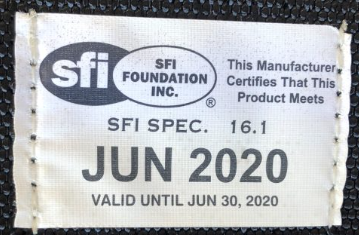Sign up now to join the JEGS email newsletter and be the first to learn about new products, special deals and e-mail only offers!

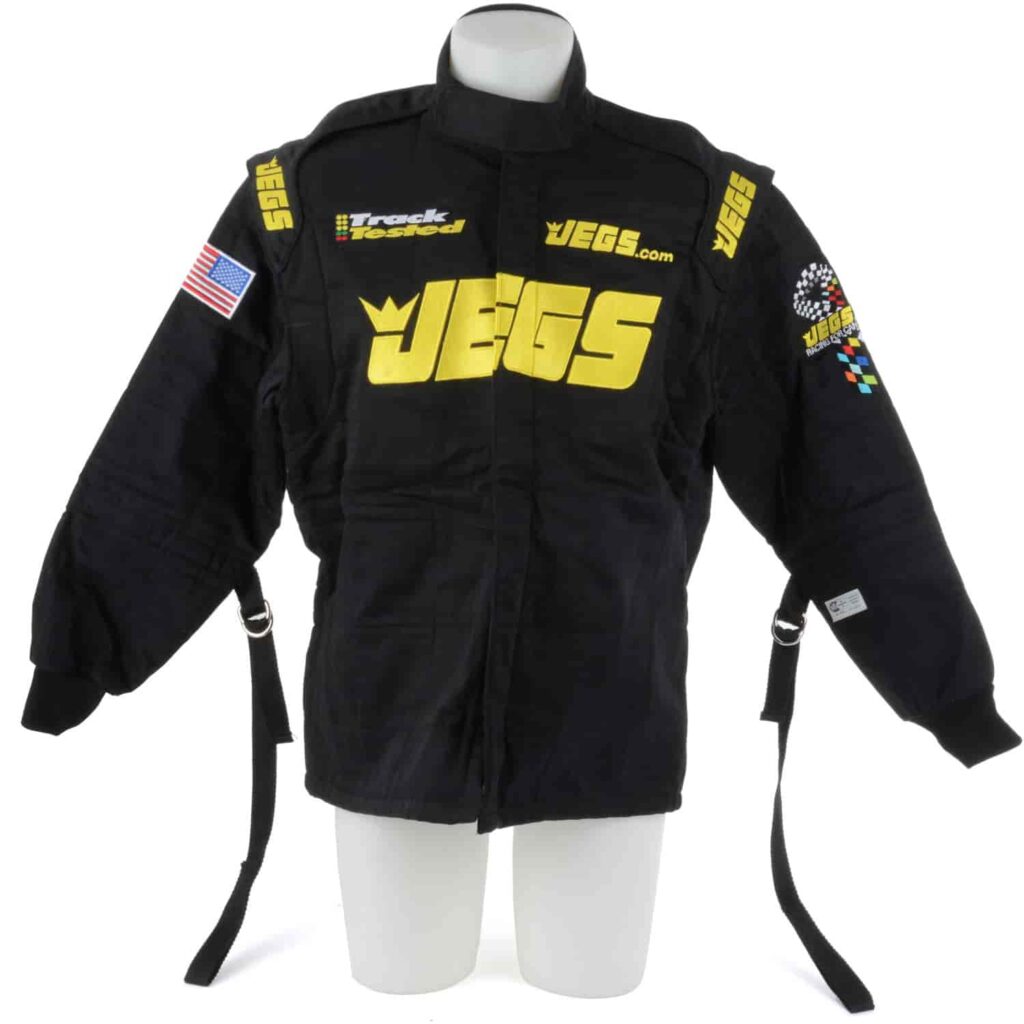
Whether you're a seasoned F1 racer or an auto enthusiast with a sweet tooth for adrenaline, safety should always be your top concern when hitting your local track.
While accidents are less common nowadays, thanks to strict regulations and advancements in car safety tech, they still happen. And when they do, the difference between walking away unharmed and sustaining severe injuries often comes down to the quality of the safety equipment used.
But it's not just about having safety gear; you need race car gear specifically designed for racing. Specialty racing gear is typically made to comply with stringent regulatory standards. It also tends to be made from higher-quality materials, meaning it's more durable and less likely to fail when put to the test.
This article further details the importance of choosing quality race safety equipment.
We'll also explore the essential safety gear you’ll need to ensure a safe day at the track, including:
Finally, we'll share tips on selecting equipment based on comfort, brand reputation, and construction quality.
We'll try to keep the doom and gloom to a minimum, but the truth is accidents happen. Thankfully, investing in high-quality race safety equipment can tilt the odds in your favor if you end up in one.
High-quality safety gear is designed and tested specifically for the high-stress environment of racing. Moreover, this equipment must meet stringent safety standards set by international motorsport bodies. Some of these include the Fédération Internationale de l'Automobile (FIA), which governs prestigious racing series like Formula 1, the SFI Foundation (SFI), and the Snell Memorial Foundation.
It's important to note that specific types of races have unique requirements. Whether revving up on the F1 circuit or kicking up dust in a rally race, each requires specialized safety equipment. Drag racing safety equipment, for instance, must account for extreme acceleration, high speeds, and potential fire risks.
Being out of compliance with these safety standards can lead to serious penalties. Some of these include disqualification from events, legal repercussions, and even denial of insurance claims in the case of an accident.
Whether it's a helmet crafted to absorb high-impact forces, a fire-resistant suit to shield you from flames, or a HANS device to safeguard your neck from sudden movements, quality race safety equipment is meticulously engineered to reduce the risk of severe injuries.
Ultimately, investing in quality race safety equipment not only ensures your compliance with regulations but also provides peace of mind, allowing you to focus on the thrill of the race.
They also come with different locking mechanisms. Latch harnesses are lever-based and are typically more affordable. Camlock harnesses are dial-based for quick release, making them a pricier but faster-operating option.
No matter the type, safety harnesses work by spreading the force of an impact across the chest, hips, and shoulders, significantly reducing the risk of serious injury.

For instance, helmets for circle track racing often have a wider field of view to enable peripheral awareness on crowded tracks. Likewise, helmets for drag racing are tailored with a more streamlined view to focus on the strip ahead.
Racing helmets also feature face shields made from sturdy polycarbonate, popular for its transparency, toughness, flexibility, scratch resistance, and ultraviolet light protection. Some helmets even come equipped with a fresh-air system to manage heat and ensure comfort during longer races.
Some racing disciplines, like Formula 1, require a helmet restraint system known as a HANS device. In this case, you'll need a helmet with a Snell rating of SAH2020, which indicates it has the correct attachment points for the HANS device.
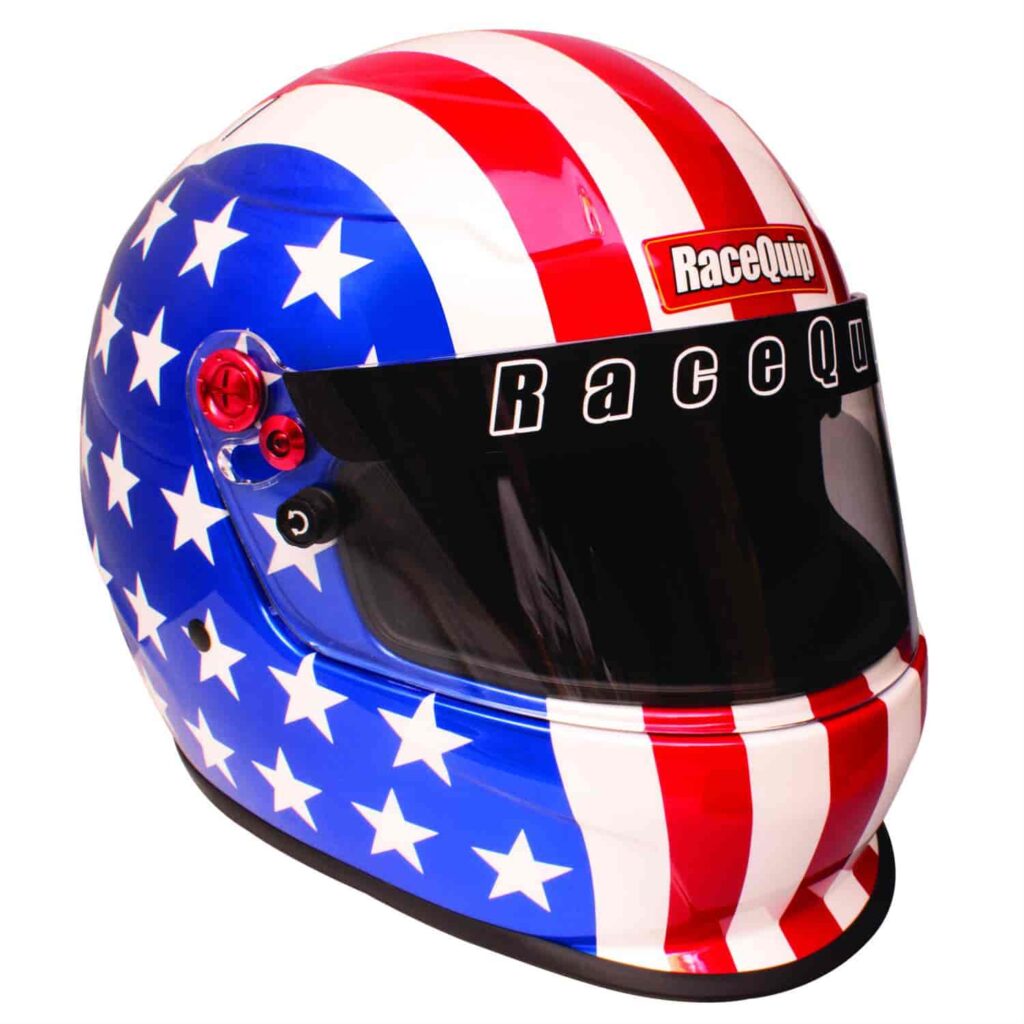
The device works by transferring the impact force from the head to the much sturdier torso, making it effective against whiplash injuries.
HANS devices are used extensively in high-speed motorsports, including Formula 1 and NASCAR. Just like helmets, certain racing disciplines require HANS devices, highlighting their importance.
Always ensure your HANS device is appropriately fitted and comfortable, as proper adjustment is key to how effective it is at keeping you safe.

Multiple layers of this material are sewn into the suit, each providing added protection against extreme temperatures. Note that some racing disciplines mandate fire suits with a specific number of layers, emphasizing their critical role in driver safety.
You should also consider how the suit fits. A well-fitted fire suit will be more comfortable during a race, ensuring your focus stays on the track.
When shopping for a fire suit, remember to check the suit's SFI (Safety Foundation Inc) rating, which indicates how long the suit protects against second-degree burns in an engulfing fire. Always invest in a fire suit that matches the risk profile of your particular type of race.
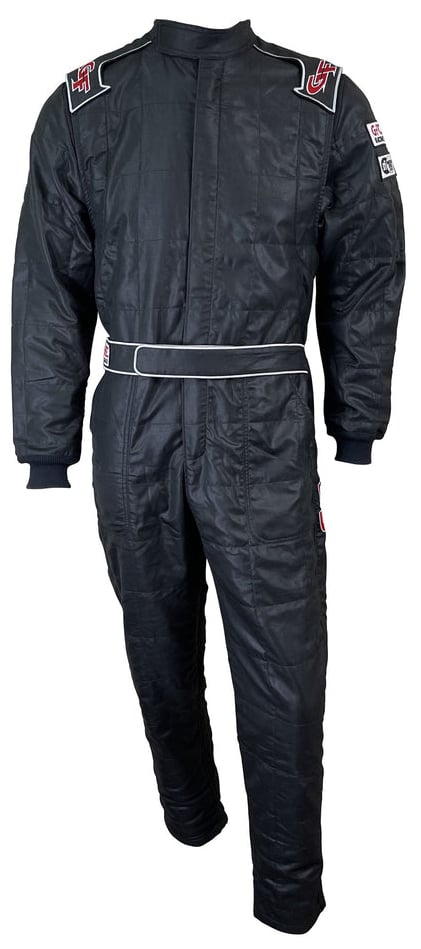
Like fire suits, racing gloves are crafted from flame-resistant materials like Nomex. They are designed to shield your hands from extreme heat and potential injury during an accident. They offer superior grip to maintain control over the steering wheel, even during high-intensity moments.
Some gloves even come with padded knuckles and pre-curved fingers for enhanced comfort and dexterity.
Racing shoes are also flame-resistant, ensuring your feet stay protected in the event of an accident. But that's not their only purpose; racing shoes typically have thinner soles for improved pedal feel and are designed to minimize ankle roll, providing optimal pedal control.
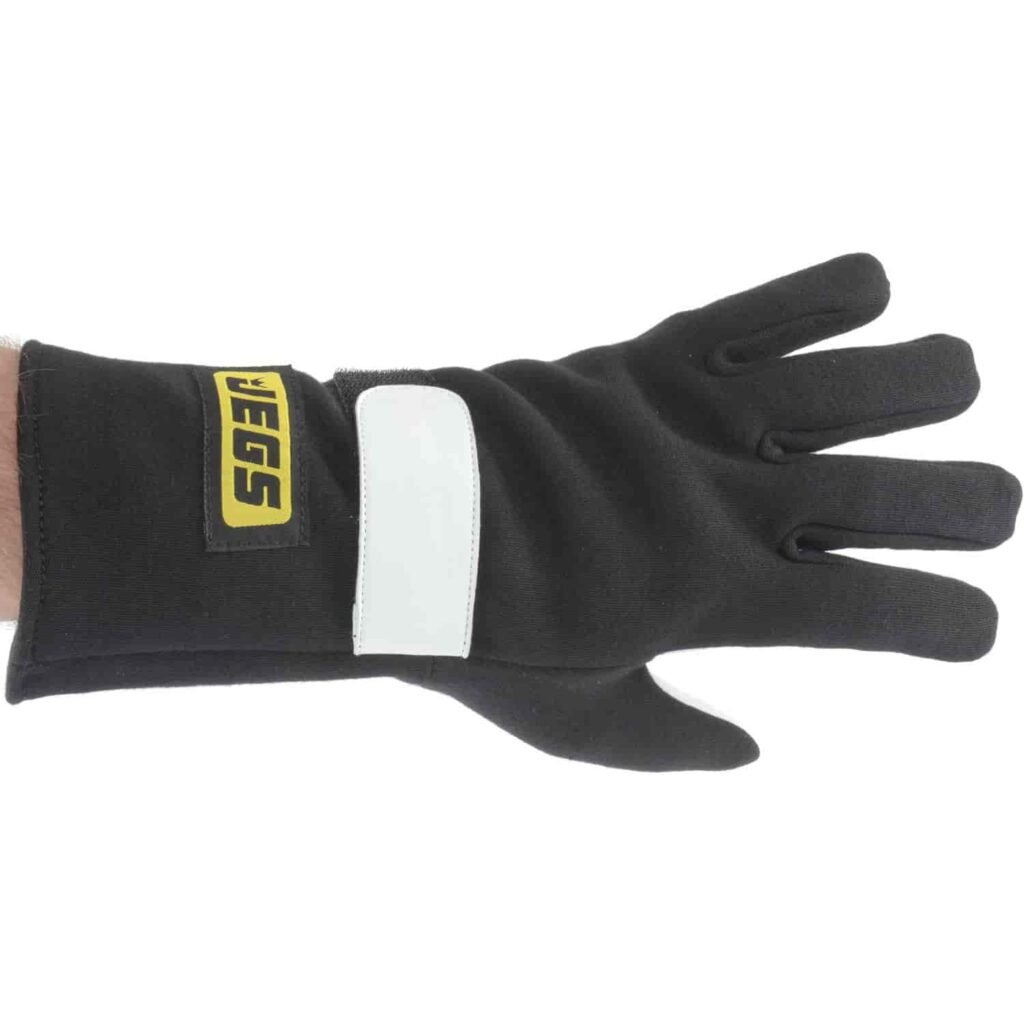

Sign up now to join the JEGS email newsletter and be the first to learn about new products, special deals and e-mail only offers!

How well your race safety gear fits is just as important as its quality. Ill-fitting equipment can lead to distractions on the track and can reduce how effective the gear is at keeping you safe.
For instance, a loose helmet won't effectively distribute the force of an impact and could even fly off during a collision. Similarly, a snug yet comfortable-fitting fire suit, gloves, and shoes ensures a full range of motion and better control over your vehicle.
Comfort also matters. If a piece of safety equipment is causing discomfort, your attention could be diverted from the race. Even the smallest discomfort can grow over time and become a distraction.
For example, meeting drag race helmet requirements is not just about safety ratings and visibility; it also involves ensuring the helmet is comfortable for the duration of the race. The last thing you want is to be adjusting your helmet at 200 mph.
When investing in race safety gear, don't overlook the importance of the brand's reputation. Established brands like Sparco, Simpson, and Alpinestars typically have years of research and development behind their products, ensuring they meet or exceed safety standards.
These reputable brands are also more likely to have been tested extensively, both in controlled environments and on the racetrack.
Researching potential brands before making a purchase is a must. Check out customer reviews and ask fellow racers for recommendations. Their experience with different brands can provide insights into product quality, durability, and customer service. These insights will help you make an informed decision when investing in your racing safety equipment.
The choice of materials used in race safety equipment, along with their construction quality, directly impacts their performance. Look for materials known for their durability, resilience, and safety features.
For instance, as stated earlier, Nomex is frequently used in fire suits and racing gloves due to its flame-resistance. Similarly, helmets equipped with polycarbonate face shields offer clear visibility and impressive impact resistance. Another example would be racing shoes, often made of lightweight, flame-resistant material with thin rubber soles for an enhanced pedal feel.
Pay attention to the construction of safety gear. Consider aspects like the number of layers in a fire suit; more layers mean better insulation against heat. Check the stitching quality on gloves, ensuring they won't unravel under stress. Look at the attachment points on helmets for HANS devices; they should be sturdy and correctly positioned.
By considering fit and comfort, brand reputation, and material and construction, you can confidently shop for race safety equipment. Always remember, your safety gear is not the place to cut corners. It's an investment in your safety and your continued enjoyment of the sport.
When shopping for high-quality racing gear, consider JEGS, a leading supplier of performance automotive parts and equipment. Our commitment to quality and safety ensures you'll find only the best gear to suit your racing needs.
Ready to gear up for your next race? Visit JEGS today and invest in your safety, because in racing, the right equipment can make all the difference. Have more questions? Contact our team.
